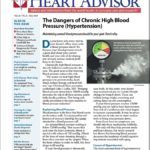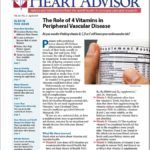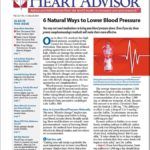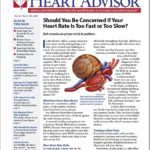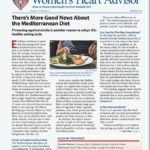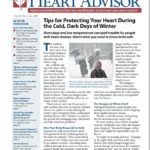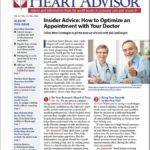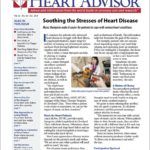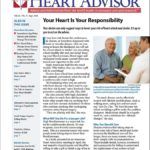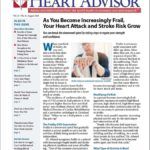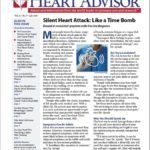Download The Full May 2019 Issue PDF
At rest, a normal heart beats 60 to 100 times a minute, depending on your age and level of fitness. This means your heart beats at least 86,400 times a day or 31,536,000 times a year. That's a lot of work for a muscle the size of your fist. And just like any other muscle that is exercised, the heart will grow bigger when it is forced to strain.
Download The Full April 2019 Issue PDF
Patients with peripheral artery disease (PAD) have atherosclerosis in the smaller vessels of their body, usually in their legs, feet and arms. PAD increases the risk of losing a limb to amputation. It also increases the risk of having coronary artery disease (CAD) or cerebrovascular disease. PAD patients have a higher risk of dying from a heart attack or stroke than CAD patients who dont have PAD.
Download The Full March 2019 Issue PDF
The average American consumes 3,500 milligrams (mg) of sodium a day-far more than the American Heart Association recommendation of no more than 1,500 mg, or about one teaspoon, of salt. Because this amount is so strict, Cleveland Clinic sets the limit at 2,300 mg. "The difference in effect is only a drop of 2 to 3 mmHg," says Dr. Laffin. "At minimum, we recommend lowering sodium intake by at least 1,000 mg per day."
Download The Full February 2019 Issue PDF
According to the Centers for Disease Control and Prevention, more than 30.3 million people in the U.S. have diabetes. Another 84.1 million have pre-diabetes, a condition that can lead to type 2 diabetes within five years, if its not treated. Diabetes is a major risk factor for early death from heart attack, stroke and many cancers. It also increases the risk of kidney disease, blindness and amputation. But these outcomes are not inevitable, if you learn about the disease and your role in managing it.
Download The Full WHA January 2019 Issue PDF
More than 90 percent of FMD patients are women, and the vast majority are diagnosed in their 40s and 50s. But Cleveland Clinic researchers recently discovered that some patients are age 65 or older before the first symptoms of FMD appear. In this age group, the disease tends to be less serious and less likely to cause symptoms than when its diagnosed at a younger age.
Download The Full January 2019 Issue PDF
A rare, but serious, problem can occur when a DVT blood clot breaks off and is carried into a heart that has a hole between its upper chambers (patent foramen ovale, or PFO). If the clot passes from the right side of the heart into the left and is pumped into the arteries supplying the brain, it can cause a stroke.
Download The Full December 2018 Issue PDF
If there are specific concerns that you would like to have addressed, please write them down before you leave home and raise them early in the appointment. Please don't wait until the end of the visit to speak up. Knowing what's on your mind helps us plan our time with you, and you will be more likely to leave the office satisfied, if your questions have been answered.
Download The Full November 2018 Issue PDF
If you are in charge of Thanksgiving dinner, cut down on the number of carbs you plan to serve. Do you really need mashed potatoes, sweet potatoes, rolls and stuffing, too? Swap one or two of these for healthier alternatives. Even the ubiquitous green-bean casserole would be a better choice, since it contains fiber from beans and a little fat from butter and mushroom soup, which will help you feel full.
Download The Full October 2018 Issue PDF
How involved a patient wants to be in music therapy depends on their diagnosis and whether they sing or play an instrument. Many simply want to listen to music. For these patients, the music therapist will select works likely to be therapeutic. When McFee sees the potential to help improve a patients medical condition, she encourages them to participate in music-making using an instrument on her cart that doesnt require special training or talent to play.
Download The Full September 2018 Issue PDF
If you have risk factors for cardiovascular disease, or have been diagnosed with heart or vascular disease, what are you doing to lessen the likelihood you will suffer a heart attack or stroke? Are you eating a heart-healthy diet and exercising? Keeping your blood pressure, blood sugar and cholesterol levels under control? Have you tossed your cigarettes to the curb.
Download The Full August 2018 Issue PDF
Frailty is not necessarily associated with older age alone. More often than not, its a consequence of poor lifestyle choices that lead to deconditioning. Thats why there are 60-year-olds whose descent into frailty is preceded by years of high blood pressure, diabetes, and other cardiovascular risk factors that cause them to become increasingly sedentary and at risk for heart attack and stroke.
Download The Full July 2018 Issue PDF
Most people know the classic symptoms of heart attack: pain in the left or center of the chest often described as heaviness, tightness or pressure, which can radiate to the jaw or left arm and may be accompanied by shortness of breath, sweating and nausea.


